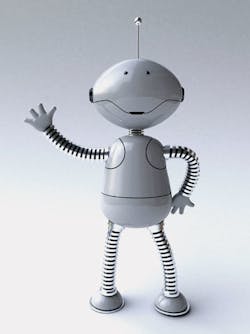ABB, Panasonic, Kuka, Precision Automation & Robotics India (PARI), Motoman Motherson Robotics, Hi-Tech Robotics Systemz and Fanuc were among the 11 exhibitors at the expo, eyeing the Indian market where companies are increasingly focusing on automation.
Prime Minister Manmohan Singh has already talked about the need to increase activities in the Indian robotics space. “We plan to go in for precision guided munitions as well as unmanned vehicle technologies in the 11th and 12th Plan period,” he said recently. Indian companies such as PARI are already involved in about five defense-related projects and more small companies will also benefit.
Faster growth
Rajive Kaul, past president, CII, highlighting the increasing importance of the robotics and automation industry, said, “According to industry estimates from 2008 onward, the world market for industrial robots is projected to rise by a yearly average of 4.2 percent, going to 139,300 units in 2010.” In India, the industry is expected to grow at 2 to 2½ times the global average, said Kaul.
Even as the yearly supply of industrial robots in 2005-06 declined in many Asian countries, it grew in India. The shipment and operational stock of multi-purpose industrial robots in India is expected to touch 4,500 units by 2010 from 540 units in 2005. The numbers are still far less than other countries, but considering India’s late entry, the potential seems tremendous.
The application of robotics and artificial intelligence technologies in India is quite new. Initially, companies were apprehensive about using robots in manufacturing or any other industry. But now, as India is becoming an international manufacturing hub, domestic players are realizing the advantages of robotics and automation. At present, the growth in India is much faster than in Japan or other Asian countries, says sources at PARI.
PARI says its industrial robots are used by global companies including Caterpillar, Hitachi, Bosch, Emerson Power, American Axle, Honeywell and Indian subsidiaries of multinational companies such as Samsung, Philips, LG, Suzuki, Renault, Ford, Honda and Hyundai.
“Our robots at Tata Motors were installed for welding and pressing automation when the Indica was launched, but became useful also during the production of the Indica V2 and the Indigo,” says Mangesh Kale, who co-founded the company.
PARI has recently joined hands with Valient, a Canadian company, to increase its share in North America. According to sources in the finance department of the company, “Opportunities inside and outside India, in the field of robotics, are tremendous. So in the near future, we may see Indian companies become billion dollar firms.”
Uday Lal Pai, [email protected] is a freelance journalist based in India.

